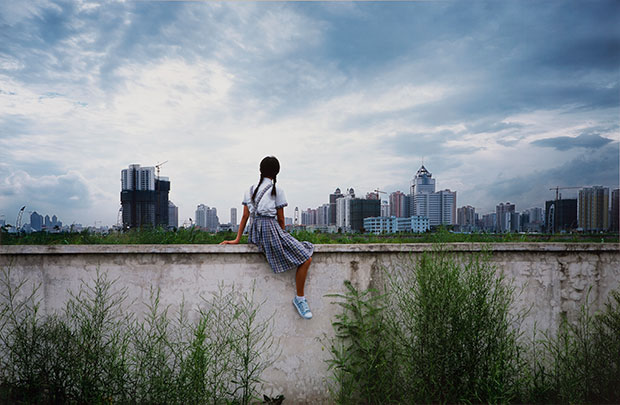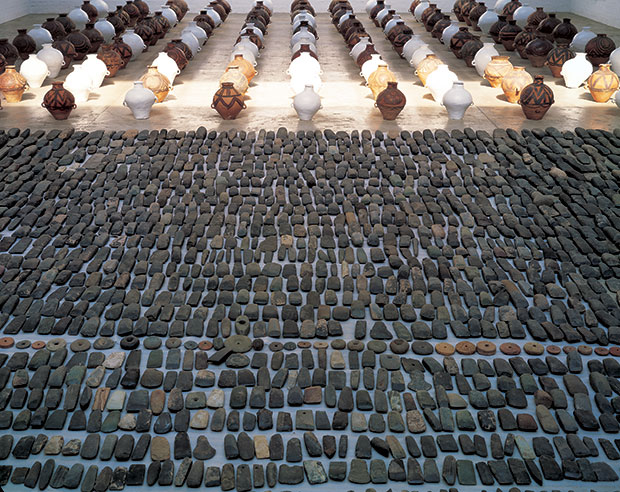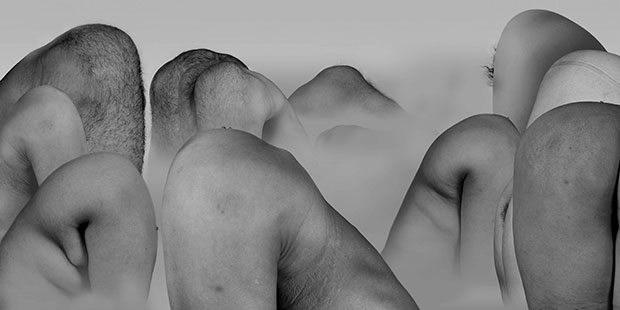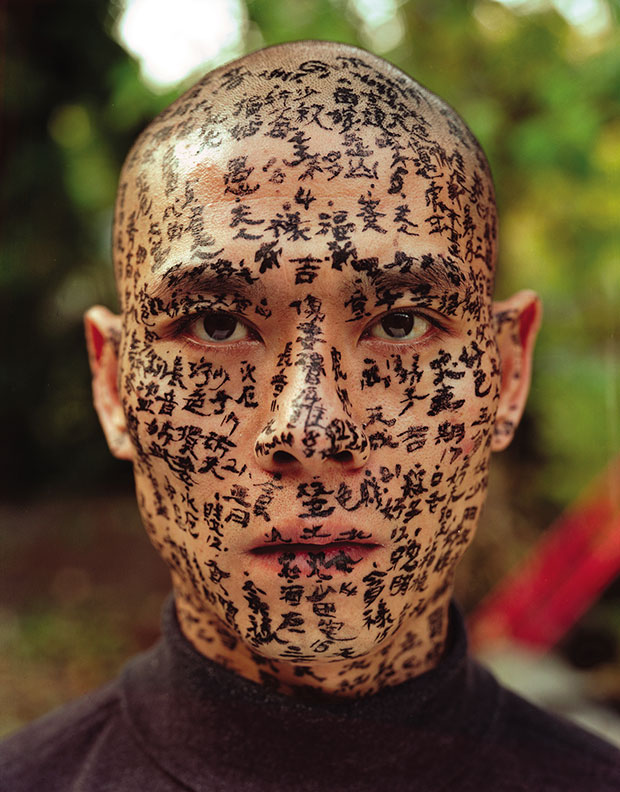
One show - 325 Chinese artists!
And you don't need to visit the People's Republic to see them all. Don't miss this rare opportunity to see the likes of Zhang Xiaogang Yin Xiuzhen, Zhang Huan, Xiao Xioaogang and Ai Weiwei courtesy of the M+Sigg Collection
It may seem a viewpoint that's difficult to buy into given China’s tumultuous history, but contemporary art scene watchers often argue that the last forty years in the country has arguably been the most culturally dynamic and rapidly evolving in its history.
Whether you subscribe to the view or not, if you have even the most passing interest in Chinese art, you’ll be pleased to hear that the Whitworth Gallery in Manchester, one of the UK’s oldest arts institutions in the North, has just opened The M+ Sigg Collection: Chinese Art from 1970 – Now, a show comprising eighty works taken from one of the world’s finest collections of Chinese contemporary art.
The M+ Sigg Collection, which spans this period, provides an unparalleled perspective on the country’s blossoming art scene, which since the 1970s has given rise to the likes of Ai Weiwei, Zhang Huan, Yin Xiuzhen and Zhang Xiaogang - all Phaidon artists - each of whom has responded in powerful ways to the economic, political and social changes affecting China.

Amassed by Swiss collector Uli Sigg, known for being one of the first Westerners to begin collecting Chinese contemporary art from the 1970s onwards, the collection includes work by 325 Chinese artists working across all media – from painting, sculpture, photography and video to performance documentation and new media.
Highlights on show at The Whitworth include Zhang Huan’s seminal work Family Tree (2000), a photographic work that documents a single day’s performance involving nine calligraphy painters taking turns to write lyrics about the artist’s family history on his face, and Liu Wei’s black and white photograph It Looks Like A Landscape (2004), in which Liu cheekily appropriated the naked silhouettes of male bodies bending over to replicate the hump-backed mountains of China’s Guilin, so commonly depicted in traditional Chinese painting.

Another stand-out work to be exhibited includes Weng Fen’s On the Wall series (2002), a set of extraordinary photographs in which the artist photographed adolescent school girls gazing out contemplatively over Chinese cities in the throes of urban redevelopment, mirroring the personal transition of the girls with that of China’s own upheavals in the early 2000s. As we explain in The Chinese Art Book hailing from Hainan Island in the far south, Weng Fen is particuarly aware of the contrast of such development: within mere decades the island was transformed from an unpoilt widerness with empty beaches to a place of densely constructed, high-priced resorts for wealthy holiday-makers.
Commenting on the collection, Sigg says: “From early on, I’ve had a strategy in collecting Chinese art. I wanted it to be a mirror of Chinese art production, across time and across all media. My concept of collecting Chinese art is not to just accumulate masterpieces, just to present masterpieces. Of course you must have masterpieces, but you also need the works to contextualise the masterpieces. They may be considered secondary artists or works, but serve to create understanding. I have been thinking of my collection as a web, not as a chain of pearls. It is a web where each work builds the context.”
Interestingly, his standpoint is one that Phaidon's The Chinese Art Book also sets out from, with its unique arrangement breaking new ground by pairing works that speak to one another in unexpected historical, stylistic and cultural ways. Visually exciting pages allow each object to stand alone and, at the same time, to be viewed in conjunction with a carefully selected companion, producing illuminating and often inspiring pairings.

The Whitworth exhibition is also an opportunity to catch these works in the UK before they are installed in the permanent collection in Hong Kong, opening in 2019.
To find out more about the artists on show, take a look at Phaidon’s beautiful monographs on Ai Weiwei, Zhang Huan, Yin Xiuzhen and Zhang Xiaogang. Or, for a broader insight into the history of Chinese art, The Chinese Art Book presents a definitive selection of 300 Chinese works of art, from the earliest dynasties right up to the contemporary – a must-read for all art lovers. You'll find more about the show here and while you're there, check out the award winning extension to the gallery by the architectural practice and big friends of Phaidon, MUMA - also responsible for the great V&A Medieval & Renaissance Galleries.